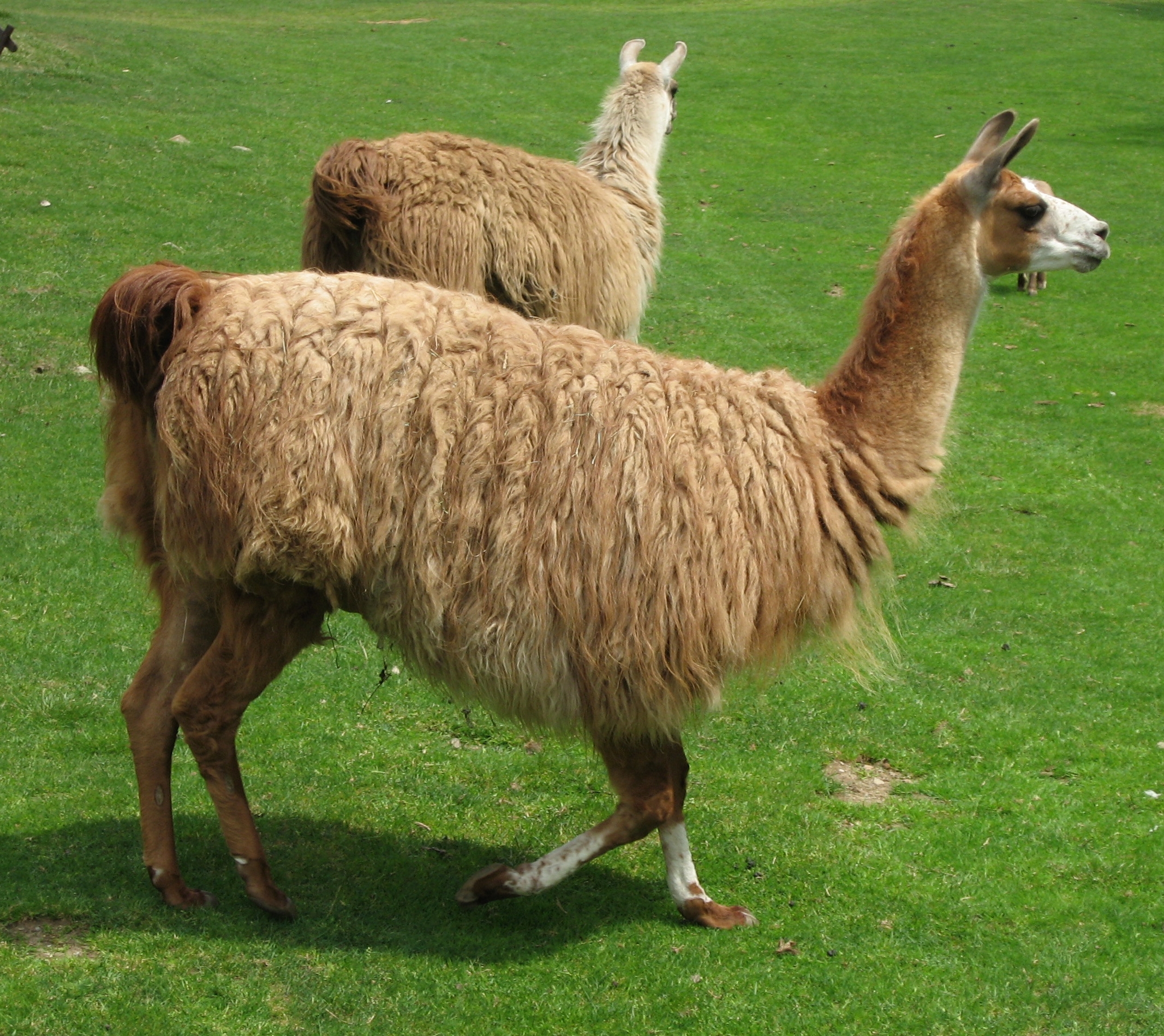
Lama (Lama glama)
Phylum —chordata
Class — mammalia
Order — artiodactyla
Family — camelidae
Genus – lama
Appearance
A full-grown llama can reach a height of 1.7 to 1.8 m (5 ft 7 in to 5 ft 11 in) at the top of the head, and can weigh between 130 and 200 kg (290 and 440 lb).
These animals have rather long ears which are curved slightly inward, known as banana shaped. Their feet are narrow, their toes being more separate than those of camels, each with a distinct plantar pad. Llamas have a very short tail and their coat is long, soft and woolly. They are usually brown in color, ranging from very dark to very light, depending on where they live.
Habitat
Originally Llamas are native to the Andean mountains of South America, but now they are extinct in the wild and exist today only as domesticated animals. They were introduced as pets and farm animals to North America, Europe and Australia. Their natural habitat is the Andean highlands, particularly the Altiplano of western Bolivia and southeast Peru, plateaus which are covered with low vegetation, including various stunted trees, shrubs and grasses.
Behavior
Llamas are highly social, gregarious diurnal animals, living in groups of as many as 20 individuals. The groups consist of around 6 breeding females with their young from the current year. The group is led by a single male that defends his position aggressively by taking part in dominance fighting.
These animals use communally shared latrines for feces, possibly to mark territory. Llamas make a lot of vocal sounds, using a range of calls that are low and yammering. Their vocalizations are especially distinct when there are predators about and to warn other llamas of danger. They are aggressive in the presence of predators and will charge, kick, bite, and spit at those they consider a threat.
Diet
Llamas are strictly herbivores animals. They eat grass and browse for mountain vegetation, native grasses, and low shrubs. They can obtain water from this food, but they also require fresh water.
Reproduction
Llamas are polygynous. Males gather a harem of around 6 females into their territorial area and then drive away aggressively all other males of breeding age which come into the area. Llamas generally mate in late summer and early autumn.
Gestation lasts 350-360 days, and one cria (infant llama) is born to each female almost every year. A cria is able to run an hour or so after being born. Newborns weigh around 10 kg, and for 5-6 months they are nursed. The mothers are responsible for the most of the parental care, protecting and caring for their crias until they are about one year old. Males provide some indirect care in that they defend a territory which provides sufficient grazing for the young and the females of their group. The females are sexually mature between 18 and 24 months, males at 2 to 2.5 years old.
In captivity
Llamas typically live for 15 to 25 years, with some individuals surviving 30 years or more.
In warm climes, llamas can live without shelter at all. In the northern regions, shelter is desirable, but heating is not necessary because the wool of llamas allows them to tolerate low temperatures very calmly. As for fencing, a standard cattle fence is sufficient. Llamas are gregarious animals, and they need the company of at least one or two tribesmen to live a full life.
In captivity llamas are fed with hay, specially formulated biscuits for herbivores and fresh browse.
 Russian
Russian
 English
English
























